Review of Kagemusha: Cinema Reserve Edition
Introduction
`Kagemusha`, or `The Shadow Warrior` as it is translated from its native Japanese, was artisan extraordinaire Akira Kurosawa`s 27th movie. Made in 1980, and only his third foray into the world of colour, `Kagemusha` is somewhat famous in the West for receiving one of those pointless celebrity endorsements under the banner, "so-and-so presents". However, in this instance, the so-and-sos in question were none other than George Lucas and Francis Ford Coppola, and the celebrity endorsement was more than eye candy; producers Toho Studios ran out of money before the film was completed, and Kurosawa fans Lucas and Coppola persuaded 20th Century Fox to put up the (US equivalent) $1½ million needed to complete production, in return for the international distribution rights.
Based on true events from the Sengoku period, but not historically accurate, it`s the tale of a lowly thief saved from the fate of crucifiction in 16th century Japan. His rescuer is Nobukado, brother of the Takeda clan warlord Shingen. A dead-ringer for the warlord, the thief is drafted in to act as a double should the need arise. But when Shingen is killed, the thief is forced into becoming a kagemusha full-time, and is tasked with acting as the deceased warlord to cover up what the rival clans would see as a timely weakness in the Takeda clan.
This double disc edition comes from 20th Century Fox`s `Cinema Reserve` prestige collection.

Video
Presented in 1.85:1 anamorphic widescreen, this edition of `Kagemusha` hasn`t been given the visual spit and polish that might have been expected. Grain and dirt is prevalent, there`s a spot of shimmer and everything is low contrast, overly dark, and at times, murky. But it is perfectly watchable, and can`t hide the wonderful use of colour and expert composition throughout the film.
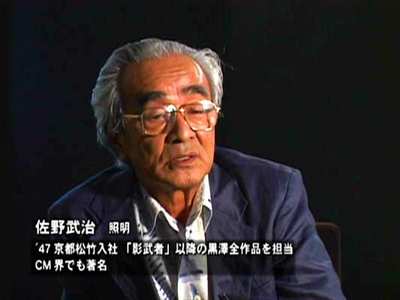
Audio
The sole audio track is a Japanese Dolby Digital 4.0, and it`s every bit as unremarkable as DD 4.0 sounds. Three-channel stereo with mono surrounds, dialogue is clear and effects are strong, although the rears tend to be overburdened by the score at times.
For the feature itself, subtitles come in the form of English and English HoH.
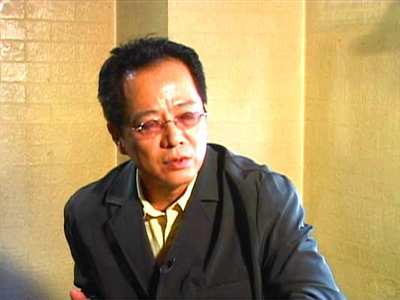
Features
Disc One
-------------
Stephen Prince Commentary: Informed and educational, the yak-track is over-rehearsed and sounds like it`s been read straight from the pages of a thesis on Kurosawa. While it`s full of anecdotal tit-bits and historical references, it`s still very much of the dry, analytical style that crops up on most of these "expert" commentaries. There is a text commentary option which follows Prince`s audio almost word for word.
Disc Two
-------------
Lucas, Coppola and Kurosawa: This imaginatively-titled extra is a look at the Hollywood heavyweights discussing Kurosawa`s influence in their film-making and their involvement in the financing of `Kagemusha`. It`s a rather short (20 mins) but sweet featurette in which we discover what a knack Kurosawa had for art, just how polite Francis Coppola really is, and how George Lucas` ego really does know no bounds. But by far the most interesting thing about this feature is that neither Lucas nor Coppola can hide the fact that they were apparently quite disappointed in `Kagemusha` once they saw the finished product; in fact, Coppola gets rather tongue-tied trying to say, "Kagemusha isn`t as good as Kurosawa`s earlier films" without actually saying it.
It`s Wonderful To Create: This 40-minute feature acts as both a short retrospective on Kurosawa and a making of `Kagemusha`.
A Vision Realised: This is best described as a condensed version of the film, acted out with Kurosawa`s original storyboard paintings, and narrated/acted out by Masayuki Yui - who played Ieyasu in the film. Some of Kurosawa`s paintings were amazing in their vividness and composition, and this feature brings them to life.
There is also a storyboard-to-stills comparison feature, and a few trailers.
All the features across the second disc have a plethora of European subtitles, as listed in the `Disc Details` section.
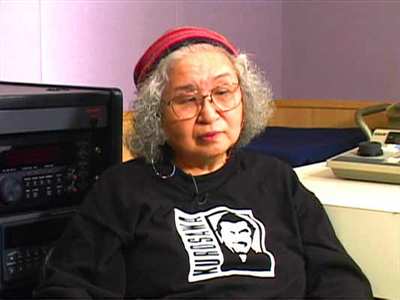
Conclusion
Akira Kurosawa is one of those icons who seems to be above criticism, and merely hinting that one of his films is anything less than stellar is considered a hanging offence in some circles, so this is officially going out on a limb; as marvellous a cinematic artisan as he was, the man was not beyond above average work, and `Kagemusha` is an example of a director ripening with age but forgoing much of what made his name in the first place; excitement. `Kagemusha` is full of panache and style, weighted with some particularly good performances and wonderful direction, but although far, far from a duffer, `Kagemusha` is a second-tier Kurosawa film: Good, but not great.
It actually has more in common with something you might catch on at the Old Vic than `Seven Samurai` or `Yojimbo`. Poetically dramatic with Shakespearean influences in character and plot (not to be confused with the direct transpositions of The Bard`s work which Kurosawa often explored), `Kagemusha` spends much of its 2½ hour running time exploring the quiet narrative of a man adjusting to a role at first he doesn`t want to perform, and later he becomes lost in. It`s dialogue heavy, which tends to result in a chugging pace, and isn`t as epic in scope as its length suggests, Kurosawa instead opting for a large scale character piece. Tatsuya Nakadai turns in a great show as the thief, but this itself is perhaps a little too traditional. While it lends itself to the stoic mocking of the late warlord, the kagemusha is, at the end of the day, a simple criminal thrust into an alien environment, and Nakadai`s performance, and to a certain degree, the requirement of his part, doesn`t leave much breathing room to explore the true character of the kagemusha when he isn`t pretending to be someone else.
The battle scenes are the cinematic highlight of the film. Majestically shot, Kurosawa`s eye for composition, certainly in-part owed to his training as a painter, is unrivalled. Hundreds of cavalry and infantry trotting home from battle across green fields, or a mile of men launching an assault backdropped by a red evening sky are a true sight and display a beautiful understanding of composition and a true embrace of the colour format. But even these can be hamstrung by clumsy, overlong scenes filled with men barking orders in the heat of battle, with the kagemusha, like a true avatar of the viewer, sitting a little confused with regards the ins and outs of what`s actually going on. This doesn`t make them any less grand, but it can be a little disconcerting considering so much effort has been put into following a rather involved story that requires a large helping of concentration on who is saying what and why.
`Kagemusha` is a lot of things, but one thing it most definitely isn`t is `Kurosawa For Beginners`. Within his vast body of work lie some truly masterful works representative of a finely-honed craft, and `Kagemusha` is an auteur exploring new avenues and the limits of his storytelling ability. Character-driven and slow burning, the film has enough going for it to make it essential for Kurosawa fans and a curio for fans of good storytelling. It just isn`t Kurosawa at his finest.
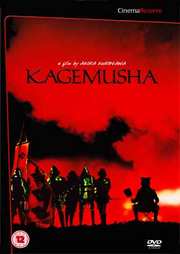




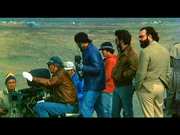



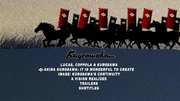
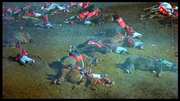
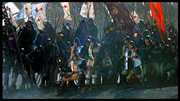


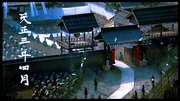
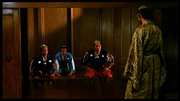

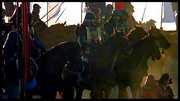
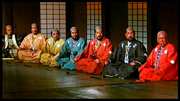
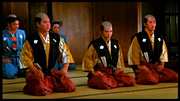

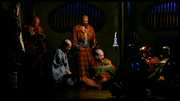
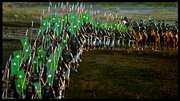
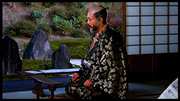
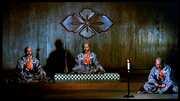

































Your Opinions and Comments
Be the first to post a comment!